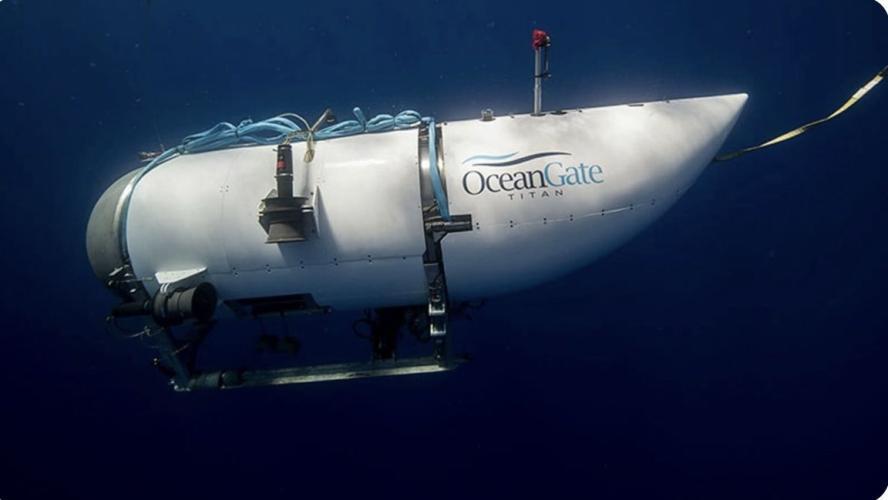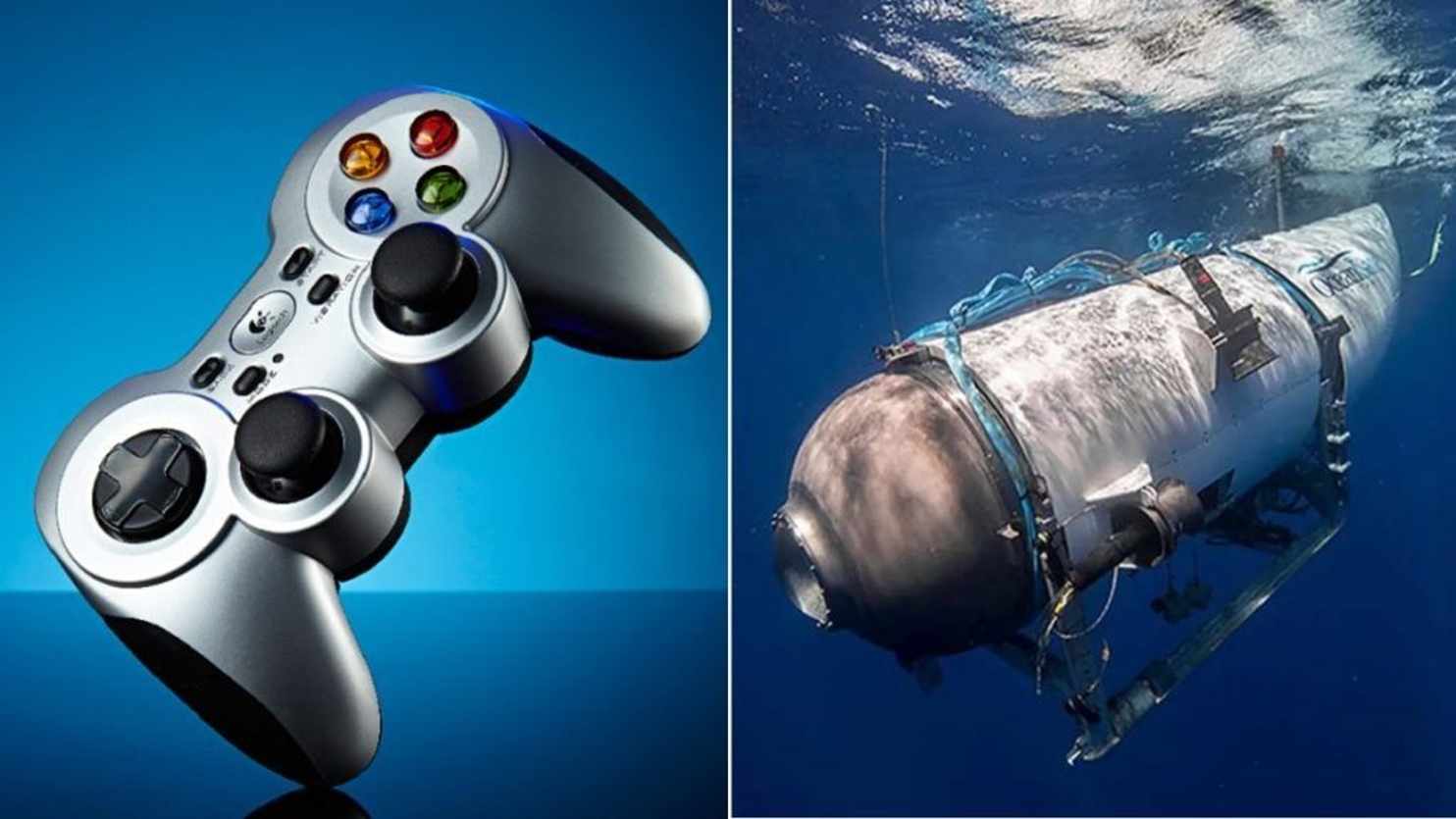The missing submersible vessel Titan, transporting five ocean explorers Hamish Harding, Paul-Henri Nargeolet, Shahzada Dawood, his son Suleman Dawood, and Stockton Rush, the CEO of OceanGate Expeditions imploded during its descent towards the Titanic at a depth of 2,100 fathoms (13,000 feet) while being controlled by a $30 video game controller made by Logitech
Using a video game controller as a navigation system is not particularly uncommon for certain crafts or even occupations like military drone pilots. However, in this instance, a $30 Logitech PC controller was used to pilot the submersible vessel.
The OceanGate expedition took the five explorers on an underwater tour in the North Atlantic to visit the wreak of the Titanic last Sunday.
It was reported that each participant paid the sum of $250,000 for a once in a lifetime experience when unfortunately, contact with the expedition was lost approximately one hour and 45 minutes after its launch.
The controller, specifically the G F710 model which runs on two AA batteries was featured in pre-launch videos of the submarine with some minor modifications to its thumbsticks.
The Logitech G F710 Wireless Gamepad controller comes with 2.4 GHz Wireless, USB Nano-Receiver, Controller Dual Vibration Feedback and a 4 Switch D-Pad,
Before the Titan’s launch Stockton Rush, the CEO of OceanGate Expeditions who sadley perished in the underwater tragedy said, “We run the whole thing with this game controller” and indicated they made it essential to the submersible’s operation.
A renewed (refurbished) version of the controller can currently be purchased on Amazon for $30, and it holds a rating of 4.2 out of 5 for the original model. The controller is only compatible with decade-old Windows and Chrome systems.

Before the accident OceanGate Expeditions operated two submersible vessels. The Titan and the Cyclops 1. The Titan which was the world’s only carbon-fiber submersible said to be capable of diving five people to 4,000 meters (13,123 feet).
The Cyclops 1 submersible can transport up to five people to depths of 500 meters (1,640 feet) and has served as an observation platform for dozens of research projects, expeditions, and training dives.
The OceanGate website says the Titan was designed and engineered by OceanGate Inc. in collaboration with experts from NASA, Boeing and the University of Washington. However, no evidence of endorsements or partnerships from any of these entities have been uncovered.
After the disappearance of the Titan the University of Washington stated that APL (applied physics labratory) had no involvement in the design, engineering or testing of the submersible.
A NASA spokesperson said that NASA’s Marshall Space Flight center had a space act agreement with OceanGate but did not conduct testing or manufacturing via it’s workforce or facilities.
A Boeing spokeperson also said that the company was not a partner on the Titan and was not involved or apart of the submersible’s construction.
David Lockridge, the OceanGate director of marine operations filed a quality control report in Janurary 2018. He stated that no non destructive testing (NDI) of the carbon fiber hull had taken place to check for issues such as voids or delaminations that could compromise it’s stength.
Lockridge was dismissed as a result and OceanGate filed a lawsuit accusing him of improperly sharing trade secrets and fraudulently manufacturing a reason to fire him. The suit was settled later in 2018.
Engineers are also now emerging and have suggested that the vessel’s operational lifetime may have expired due to excessive cycles.
Officals say a large debris field containing five major pieces of the Titan vessel were spotted by a remotely operated vehicle (ROV) scouring the seabed near the Titanic wreck site 400 miles south of St John’s, Newfoundland.
The debris was “consistent with the catastrophic loss of the pressure chamber. However, it’s to early to tell exactly when the implosion occurred,” they said.
The US Navy says it recorded a sound “consistent with an implosion” just after the Titan was reported to have lost communications with its support ship on Monday.
The navy forwarded information and other data onto the Coast Guard which continued the search because it did not consider the information to be “definitive” at the time.
Officials could not confirm whether they will be able to recover the bodies of the 5 lost crew members. However, Dave Corley, a former US nuclear submarine officer says when a submarine hull collapses it moves inward at about 1,500mph (2,414km/h) – that’s 2,200ft (671m) per second.
“When the hull collapses, the air auto-ignites and an explosion follows the initial rapid implosion causing Human bodies to incinerate and turn to ash and dust instantly,” Mr Corley told the BBC.
On Thursday, Rear Admiral John Mauger of the U.S. Coast Guard informed reporters that robotic vehicles deployed on the seabed would persist in collecting evidence. However, due to the circumstances surrounding the accident and the harsh environmental conditions, it remains uncertain whether it will be possible to retrieve any remains.
Meanwhile, several customers have voiced their concerns about wireless and connectivity problems in their reviews of the Logitech G F710 video game controller sold on Amazon.







